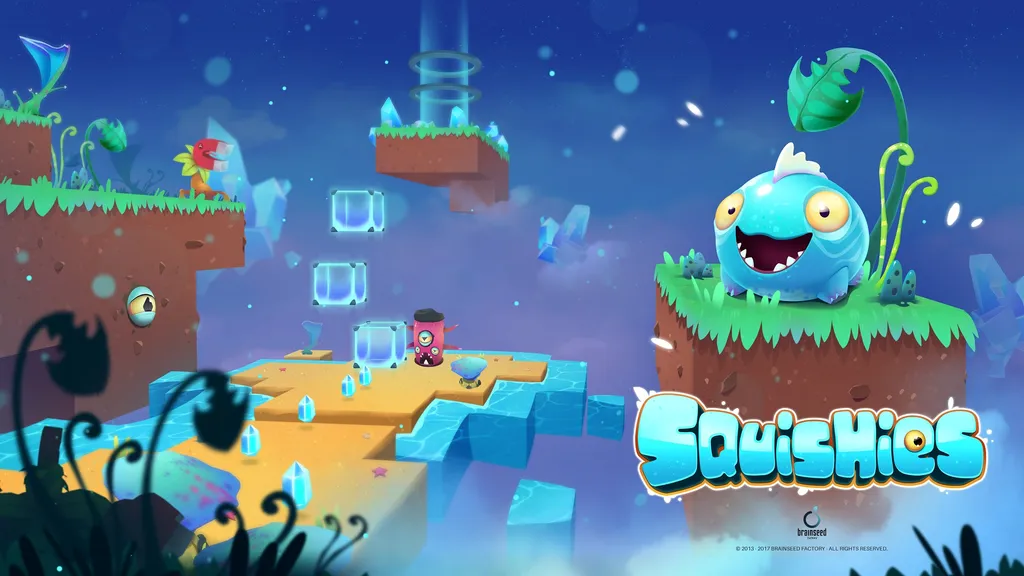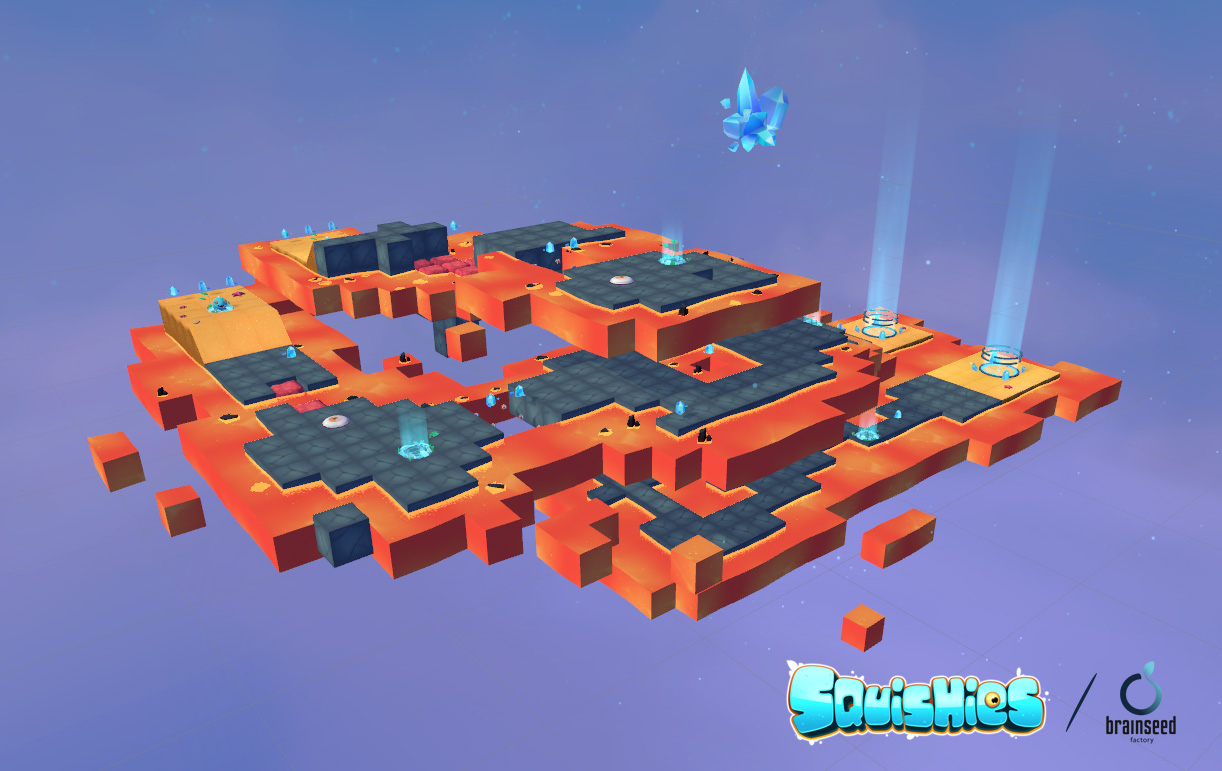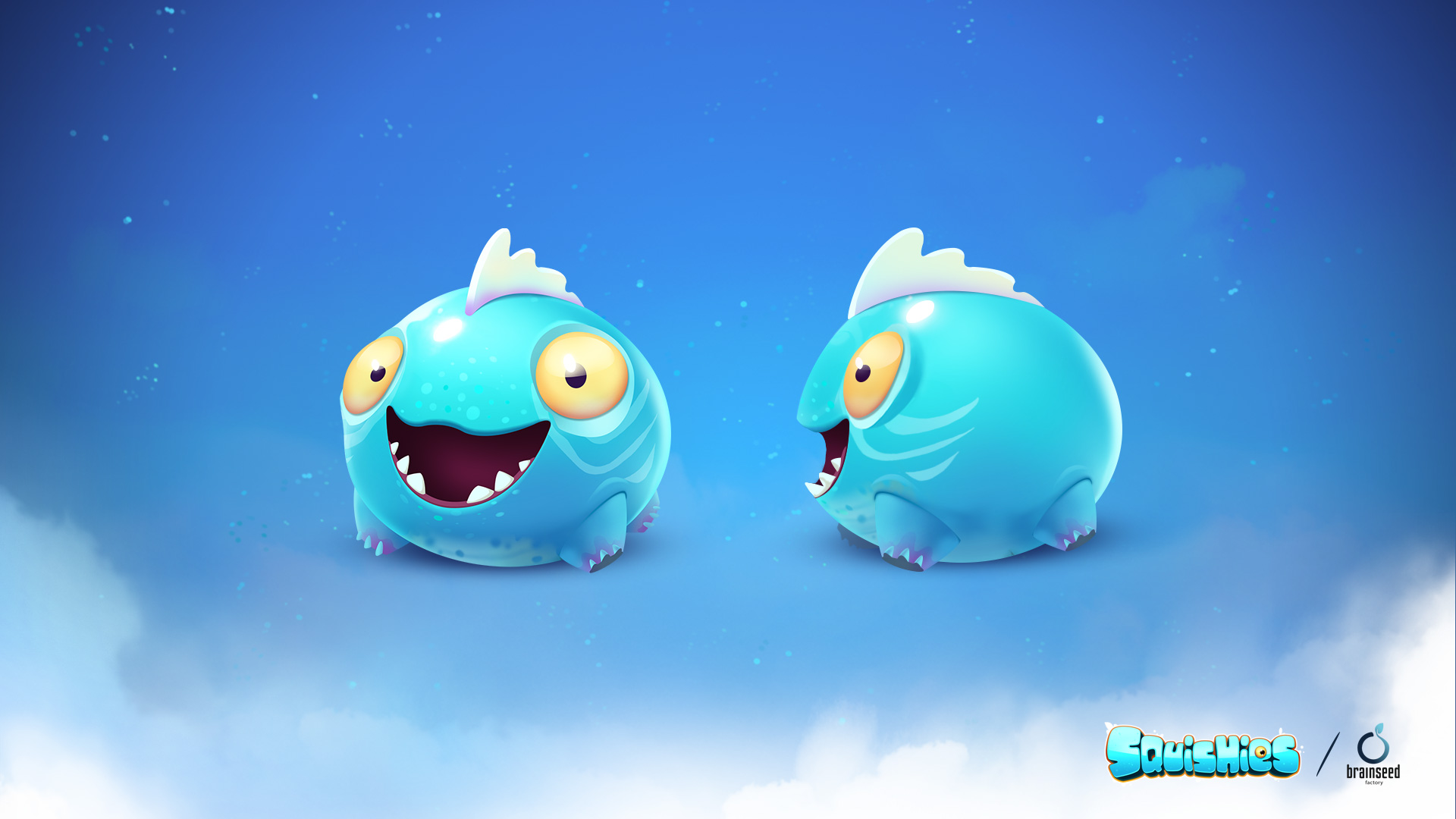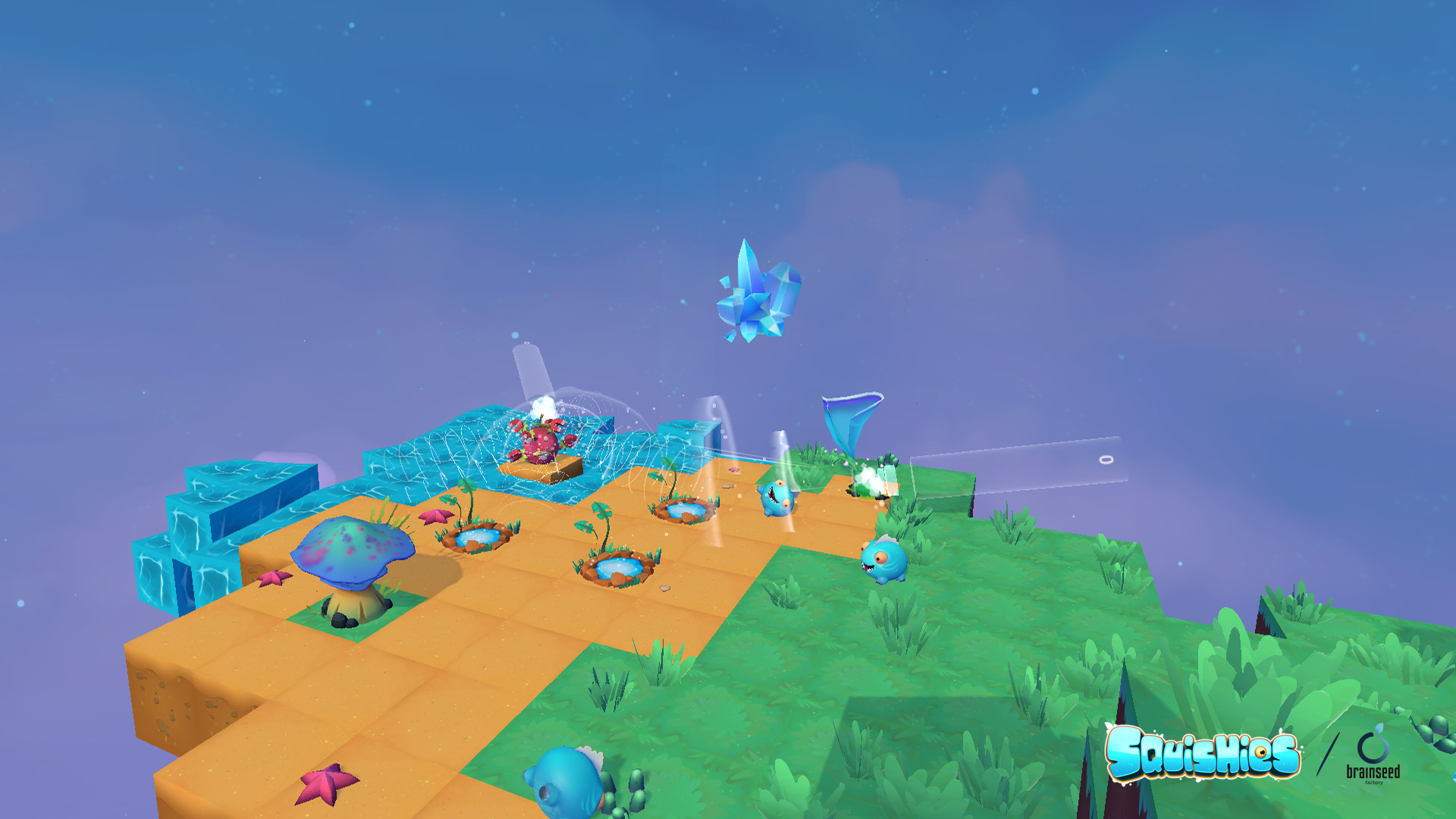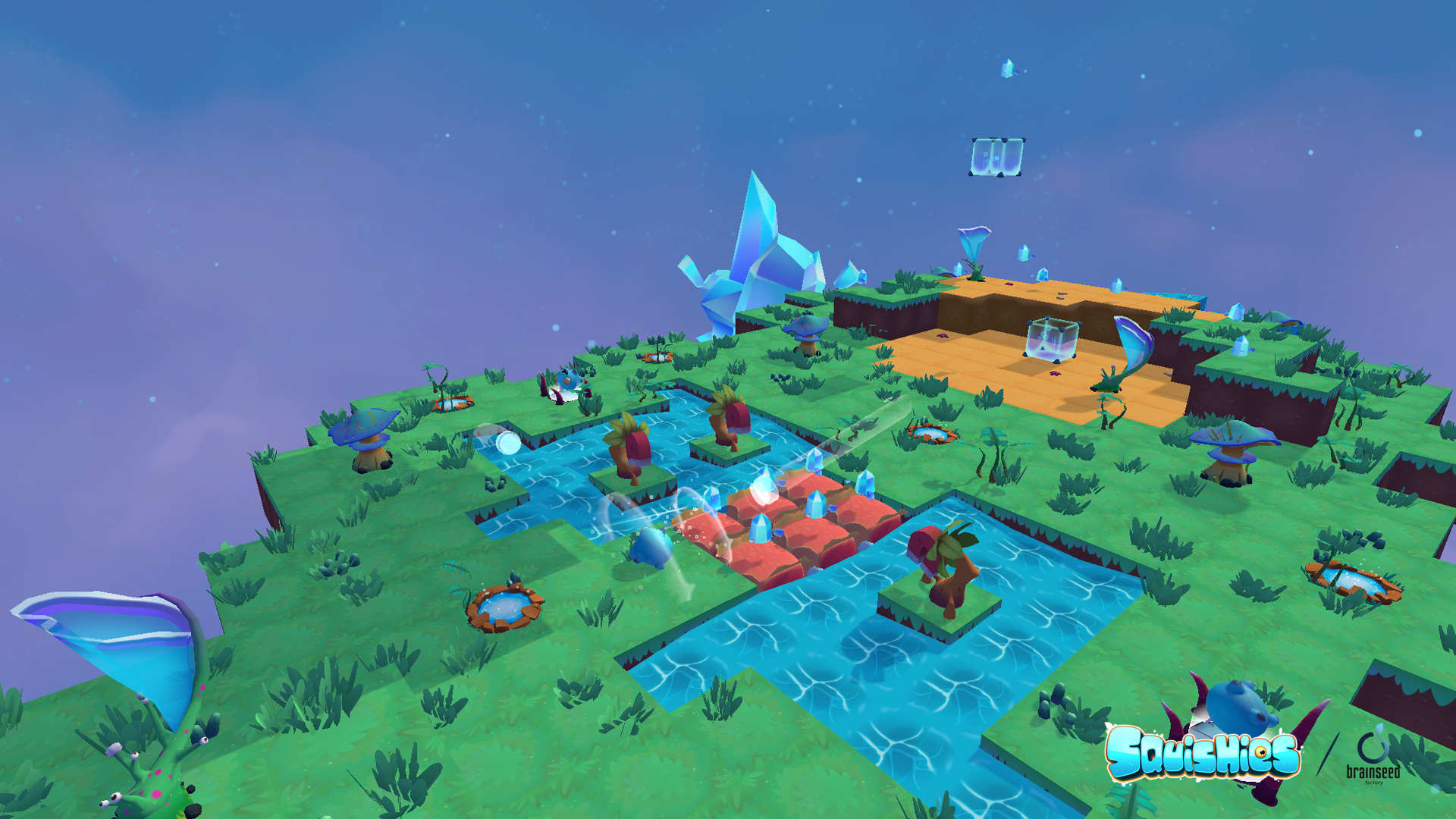When Brainseed Factory, the developers of Typoman, told me they were making a VR game, I’ll admit Squishies isn’t what I envisioned. The team’s previous game was a devilishly smart 2D platformer that played on words to create unique mechanics. Find a spare O lying around, for example, and you could role it up to an N to turn a machine on. It was an ingenious idea, and the strikingly morbid tone helped cement it in your mind.
Squishies, meanwhile, is anything but morbid. In fact it’s painfully adorable; you use two position tracked controllers (for the purposes of my early demo, the HTC Vive wands) to shoot gusts of wind that guide jelly-like spherical creatures around different courses, gathering crystals and avoiding perils. It’s a little like a marble maze, only if instead of tilting the board you moved the ball with two hairdryers, and instead of a hole that leads back to the finish, there’s a pit of lava.
“We’ve been VR early adopters from the very beginning,” Bilal Chbib, Brainseed CEO & Founder, tells me over the phone. “So we started with the DK1 as one of the first who ordered it and played around with it and participated in VR jams and visited events and things like that. We created our own tools and library.”
That was four years ago, though, so Brainseed has had a while to mull over ideas for a VR game. They wanted to create a game in which the gameplay was the main element, giving players the urge to come back and try new levels.
You can see the beginnings of those ideas in the early build of Squishies. The first few levels start out simple enough; you guide one of the critters across a broad path, using other buttons to either scale down so that you feel like a giant above the course, or scale up to bring yourself much closer to the action. You’re gently introduced to a handful of mechanics like basic switches and a power-up that lets you stick to walls, and you’re encouraged to spin the world around and explore for crystals you might have missed.
Things get a little more interesting deeper into the demo, however. In the third level, for example, you control two Squishies, each of which has separate goal zones. Starting out, I have to free one by guiding the other over to a switch, and then they navigate separate paths, taking it in turns to flick switches that open the way up for their companion.
Yet another level in I now have three creatures to take care of. This is where Brainseed introduce a little more challenge to the mix; a set of narrow pathways hold crystals that I want to grab, but flowers that can blow the Squishies off are lining the course. To grab them, I decide I need to be quick and accurate, taking time to carefully measure up the angle from which I’ll shoot my Squishy (which is a sentence I don’t feel comfortable writing), and then pushing it away. I fail drastically at the poor little guy falls to his doom.
I feel like that’s where Squishies will succeed the most; not as a gentle puzzler but a deceptively tricky one, a little like the Super Monkey Ball of VR, if you will. This level is also massive with plenty to explore, and finding all of the crystals in itself is a game, let alone getting your little friends to grab them.
Crucially, Brainseed has a lot of ideas for where it wants to take Squishies’ gameplay over the course of development. During the interview Chbib discusses ideas for new power-ups, level designs and perhaps even multiplayer. One of the game’s main selling points is already included in my demo, though: a level editor.
Squishies’ levels are made up of blocks, a little like Minecraft only not as blatant. I didn’t realize that each level could have been simply pieced together using these terrain cubes until I dived into the level editor myself to tinker around. It’s wonderfully simple; I can select which block I need from a menu then basically paint it into the world in front of me. I can choose different threats and power ups, change the gradient to add some verticality, and decided how many Squishies should be in the level.
The level editor was an important part of this experience for Chbib and the team, though they’ve got their reservations. “We noticed that creating these levels is much more fun than playing these levels,” he admits. So the team capitalized on that; it’s adding features to help foster a community that will hopefully one day embrace this side of the game.
Of course, Brainseed wants playing the game to be just as fun as making it. “We’re trying to figure out how to keep the player engaged in the gameplay,” Chbib says. “We have a feeling that creating levels is much more fun but there’s this danger of having people create levels that no one wants to play.”
He talks about giving players motivation to see levels through with hidden secrets and rewards that will unlock the game’s exploration side.
Given the quality of Brainseed’s last game, though, I’m confident the team will work out something. A taste of Squishies (another uncomfortable phrase) promised a charming, inventive puzzler with just a hint of addictive challenge. The team hopes to have the game out in around a year’s time, so there’s a lot they can do to build on that.
For more info make sure to check out the game’s official website, Facebook, and Twitter.

